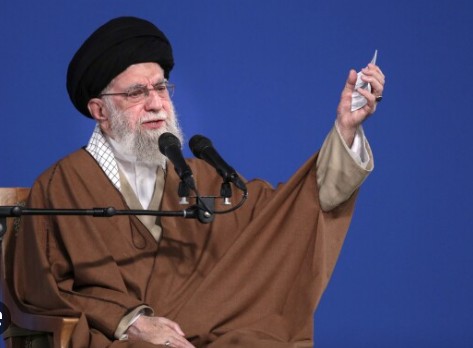Alarmed by ongoing Israeli airstrikes and fearing assassination, Iran’s Supreme Leader Ayatollah Ali Khamenei has named three senior clerics as potential successors, Iranian officials tell the New York Times.
The report also said that Khamenei has reportedly withdrawn into a fortified bunker at his residence. He has severed nearly all direct communication, banned mobile phones and electronic devices, and now is conducting business only through a handful of trusted emissaries
Amid speculation, three names have surfaced on different social media platform in Iran as the successor of the Iraninan Supreme Leader. They are Mohsen Araki, an Iranian scholar, cleric, university lecturer and politician, Alireza Arafi is an Iranian Shia cleric and he is currently a member of the Guardian Council and also a member of the Assembly of Experts and Seyyed Hashem Hosseini Bushehri, an Iranian Twelver Shia cleric and representative of Bushehr province in the Assembly of Experts.
Citing Iranian officials, the report states that the Iranian Supreme Leader is aware that Israel or the United States might attempt to assassinate him. In this context, he has made an unusual decision. Officials say the Assembly of Experts—the religious body responsible for appointing the Supreme Leader—will be tasked with selecting his successor swiftly from the three proposed names.
Normally, the process of appointing a new Supreme Leader in Iran takes several months, with clerics choosing candidates from their own shortlist.
However, given that the country is currently engaged in war, officials say Khamenei wants to ensure “a rapid and orderly transfer of power to secure his legacy and maintain stability.” They also emphasized that Khamenei’s son, Mojtaba, is not among the potential successors.
Facing the gravest security threat since the 1980s, Khamenei has taken these extreme measures to shield himself, disrupt enemy targeting, and ensure continuity of leadership through a prearranged succession plan. These actions underline the intensity of the crisis and demonstrate how seriously Iran’s leadership views the threat of assassination and regime instability.
From his bunker, Khamenei has issued two video addresses, declaring: “Our people will resist this imposed war. We will not surrender.”
Iranian intelligence agencies have banned the use of mobile and electrical devices for officials, ordering senior military commanders to remain underground in bunkers
The public has been urged to report any suspicious individuals or activity, especially near sensitive infrastructure such as power plants and refineries.


